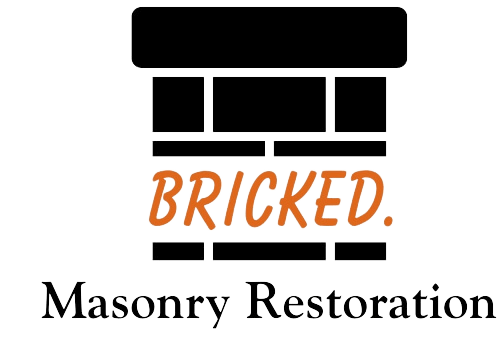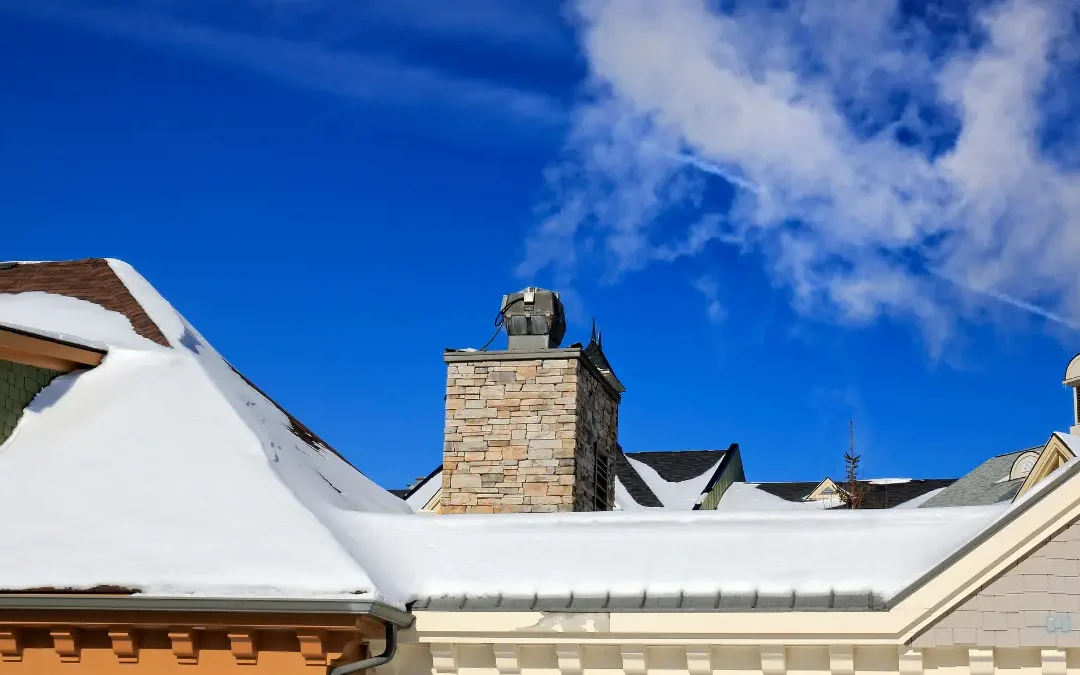Maintaining your chimney during the winter months is crucial to ensure its safety, efficiency, and longevity. Cold weather and increased fireplace use can lead to specific challenges, but with regular attention and proper care, you can keep your chimney in optimal condition. Here’s a winter maintenance guide for your chimney:
1. Schedule a Professional Chimney Inspection: Start the winter season with a comprehensive chimney inspection by a certified chimney sweep. A professional from Bricked Masonry and Restoration can identify any issues, such as creosote buildup, chimney blockages, or structural concerns. Schedule this inspection here before you start using your fireplace regularly.
2. Clean the Chimney and Fireplace: If your chimney sweep recommends cleaning, ensure that your chimney is free of creosote and soot buildup. Creosote is highly flammable and can lead to chimney fires. Cleaning your fireplace and chimney also helps in maintaining proper ventilation and preventing the release of harmful gases into your home.
3. Check for Cracks and Leaks: Inspect the exterior of your chimney for any visible cracks or signs of deterioration. Pay attention to the chimney crown, bricks, and mortar joints. Water infiltration can cause significant damage during winter, so addressing any leaks promptly is crucial.
4. Install a Chimney Cap: If your chimney doesn’t already have a cap, consider installing one. A chimney cap prevents debris, rain, snow, and animals from entering the chimney, reducing the risk of blockages and damage. Ensure the cap is in good condition and securely in place.
5. Monitor the Damper: Check the damper to ensure it opens and closes properly. A well-functioning damper allows you to control the airflow in your fireplace, optimizing combustion and preventing heat loss when the fireplace is not in use.
6. Keep the Area Around the Chimney Clear: Remove any overhanging branches, leaves, or other debris from around your chimney. This minimizes the risk of falling debris during winter storms and reduces the chances of a chimney fire.
7. Burn Seasoned Firewood: Use only well-seasoned, dry firewood in your fireplace. Burning green or unseasoned wood can lead to excessive creosote buildup, reducing the efficiency of your chimney and increasing the risk of chimney fires.
8. Monitor for Draft Issues: Check for any draft issues in your home. If you notice cold drafts or difficulty in lighting a fire, it might indicate a problem with the chimney or the damper. Address these issues promptly to ensure proper functioning.
9. Use Spark Arresters: Consider installing a spark arrester on top of your chimney. Spark arresters prevent sparks and embers from escaping the chimney and potentially causing a fire on your roof or in nearby vegetation.
10. Install a Carbon Monoxide Detector: For added safety, install a carbon monoxide detector in your home, especially near sleeping areas. Ensure the detector is in good working condition and replace the batteries regularly.
By incorporating these chimney maintenance tips into your winter routine, you can enjoy a safer and more efficient fireplace experience throughout the colder months. Regular care not only enhances the longevity of your chimney but also contributes to the overall safety and comfort of your home.

